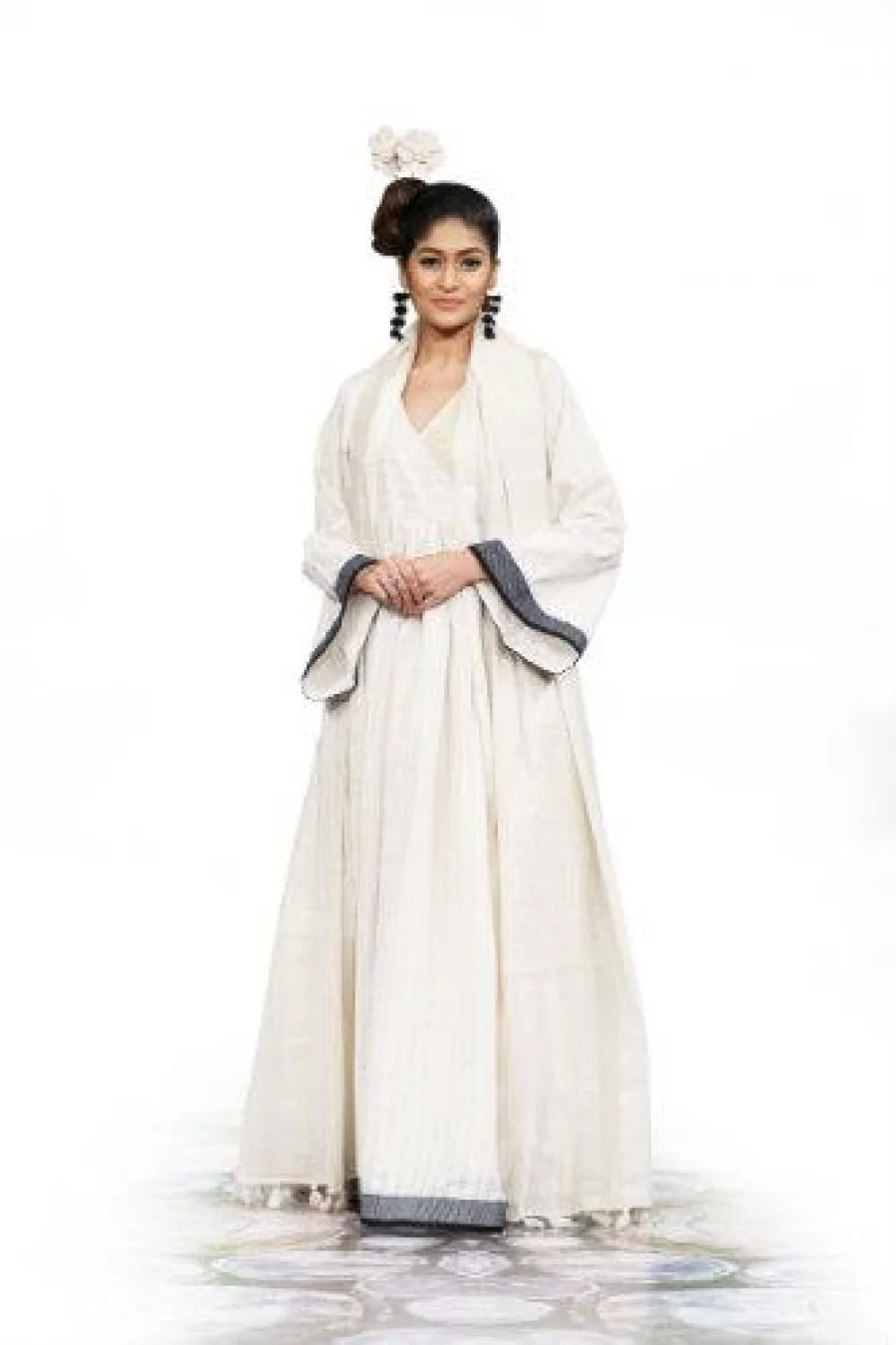Three years of the Khadi Festival down, Shaibal Saha is in an introspective mood. With the next one looming in the horizon, the stylist/designer/General Secretary of the Fashion Design Council of Bangladesh (FDCB) is taking stock of the road travelled thus far. Avenue T caught up for a quick chat.
Khadi Festival: the story so far
“I think it’s been a mixed bag,” Saha says. “Our biggest success has been in getting people talking about khadi and recognizing its potential.” He goes on to explain the revolutionary roots of the humble handspun – it was Mahatma Gandhi’s non-violent call-to-arms that would see the subcontinent use craft to stand up to the colonial powers. “You could even go further back in time to the heyday of our pre-colonial textiles, when our muslin was the stuff of fables!” he interjects. Somewhere along the line, we stopped innovating this simple textile and moved on to mass-produced garments, and so khadi, at least in our country, remained this rough homespun fabric that was only good for crude winter wear.
“In organizing the Khadi: Future Fabric show, and highlighting the way our local designers played with the fabric to create contemporary looks, as well as the international designers who have really invested a lot in developing the khadi into a fine fabric, we have definitely been able to change the way people here perceive khadi.” Saha agrees that the low carbon footprint of the fabric may become very important in the near future. “It’s a dream fabric!” he laughs.
This designer isn’t one to rest on laurels, however. “If you compare where locally produced khadi is, and what neighbouring countries have done with theirs, you’ll see a huge disparity. India, for example, has refined its khadi so that you can get the finest handspun at 200 thread counts or higher. The locally produced fabric has something closer to 50 thread counts. The designers under FDCB have had to rely on imported thread and fabric to render our visions. The good news is, as I’ve said before, we have generated interest in the possibilities in fashion for khadi. However, the less pleasant truth is, we will need a lot more support before Bangladesh is able to start producing finer khadi. A project like this will need research and development on a huge scale and large-scale investment to get off the ground. A small organization like FDCB alone cannot make it happen.”
Inspirations, Indigo, and beyond
 The story of how Shaibal Saha came upon an indigo stall in Germany in 1995, and fell so hard in love with the array of blue that he decided to start a label called Indigo, and make the colour his signature, is something of a fashion legend within some circles. “I’ve had people ask me if it was restricting, working only with blue, but I think there’s so much scope and variety within this one colour, and it lends itself to different moods.” He added that while the norm in the country is to design collections around the major cultural events of the year (Pohela Boishakh, Eid, Puja, and the wedding season), he prefers to design according to each month. “The colour of the sky, the temperature of the blue, and the mood of the weather change with each month, and it is endlessly inspiring.”
The story of how Shaibal Saha came upon an indigo stall in Germany in 1995, and fell so hard in love with the array of blue that he decided to start a label called Indigo, and make the colour his signature, is something of a fashion legend within some circles. “I’ve had people ask me if it was restricting, working only with blue, but I think there’s so much scope and variety within this one colour, and it lends itself to different moods.” He added that while the norm in the country is to design collections around the major cultural events of the year (Pohela Boishakh, Eid, Puja, and the wedding season), he prefers to design according to each month. “The colour of the sky, the temperature of the blue, and the mood of the weather change with each month, and it is endlessly inspiring.”
The colour blue isn’t the only thing that inspires Shaibal Saha. At the advent of the Khadi Festival, the Fashion Design Council of Bangladesh decided on working with themes related to our local crafts heritage, like paper cutting, nakshi, potchitro, etc. The second year saw them take inspiration from heritage sites across the nation (such as the Baliati Zaminder Bari, for example). Incorporating these native elements into cosmopolitan garments such as khadi suits, or paper-cutting motifs with Japanese calligraphy motifs, he gave his audience some truly unique offerings.“I can be inspired by anything, from changing months to travel, but I try to bring in a Bangladeshi element to it. I try to represent my country in everything I do.”
With Indigo reaching a natural conclusion, Saha is making a return to his favourite hue in a collection called Art of Blue by Anjan’s, a collaboration with fashion house Anjan’s.
Rapid fire round
Bollywood celebrity you wish you could style
Vidya Balan
Hollywood celebrity you wish you could style
Kate Middleton
What’s trending in Bangladesh right now?
Loose, unstructured silhouettes, shorter kameezes, and detailed work on shalwars
What are you creating for Puja?
The blue is always there, but red and white will also take prominence. I’m favouring simple cuts and clean lines


